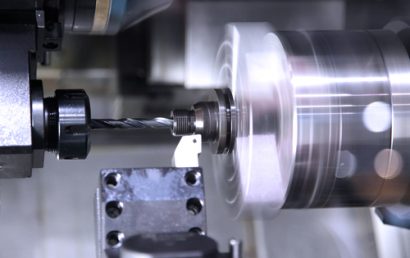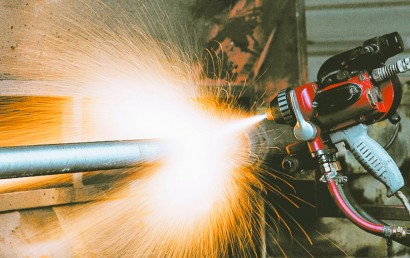What Are HVOF Thermal Spray Coatings All About?
Specially designed for HVOF thermal spray coatings, a specialized selection of powders is used. Compared to other thermal spray methods, these coatings offer a bond strength that is typically higher. Certain characteristics displayed by HVOF coatings including the following:
- Low porosity levels
- Higher density
- Higher hardness
- And a unique combination of all of the above.
Compared to their plasma applied equivalents, about five times the resistance to particle erosion and wear is typically offered by HVOF coatings. Chromium carbide and tungsten carbide are the two most common HVOF coatings.
Chromium Carbide Coatings
In high temperature environments, wear resistance is offered by chromium carbide. As a substitute for tungsten carbide coatings, it is an excellent choice, dependent upon the environment in which the machinery operates. Compared to tungsten carbide, less wear resistance is provided by chromium carbide coatings, but they can offer better oxide and heat resistance, under corrosive conditions, at higher temperatures.
In applications with high temperature environments, chromium carbide coatings are good candidates. We are talking ranges from in excess of 540°C to 815°C or 1004°F to 1499°F. Chromium carbide coatings are excellent when resistance to particle erosion, fretting, cavitation, and abrasion is needed.
Tungsten Carbide Coatings
When tungsten carbide coatings are produced by an HVOF coating process, they are extremely adhesive and highly dense. At a very high speed, coating particles are applied in a molten state. To the substrate, they instantly bond. Tungsten carbide offers double the density and twice the strength of steel. For extreme wear environments, that makes it an excellent solution! The following characteristics are held by HVOF tungsten carbide coatings:
- Low residual stress
- Low porosity
- High bond strength
- Wear resistance
When today’s technology involving HVOF thermal spray is used to deposit tungsten carbide coatings, anti-galling characteristics and excellent wear resistance for an array of industrial applications is provided. To allow the tailoring of coatings produced for every application’s needs, the following are used:
Various…
- Processing techniques
- Material composition
- Carbide particle sizes
HVOF Application Examples
Wondering where HVOF applications are used and what parts they are used on most frequently? Here are some examples:
- Impellers
- Wear sleeves
- Pins or guides
- Pump augers
- Hydraulic cylinders, rams, or pistons
- Compressor pistons
- Alligator blades
- Industrial rolls
- Agricultural wear parts
As a Final Note – The Definition of HVOF
In case you were wondering, High Velocity Oxygen Fuel is what the letters HVOF stand for. With higher coatings, superior wear protection, coatings that are considerably thicker, denser and smoother, increased adhesive strength, and improved corrosion resistance, it’s not hard to figure out why these coatings should be used – and already are – where numerous industries are concerned.
Could Your Company Use HVOF Coatings?
At A&A Coatings, through a variety of thermal spray processes, we specialize in different types of thermal spray coatings. For example, we can put HVOF thermal sprayed coatings to good use, depending on your needs. If you’re not sure what kind of coating you need, or the application process that should be used, we’d be happy to discuss coatings with you. Please contact one of our knowledgeable representatives today to discuss which coating best suits your needs and your industry.
Chances are that your competition is already using thermal spray coatings to their advantage. Don’t let them get the upper hand.



